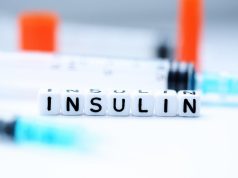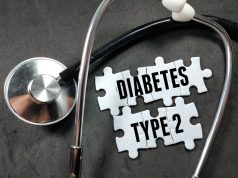About one-third of stillbirths occur at term, with highest rates at week 38 and 39 for T1DM and T2DM
FRIDAY, Aug. 9, 2019 (HealthDay News) — Higher maternal hemoglobin A1c (HbA1c) levels are associated with increased risk for stillbirth among women with type 1 diabetes, while higher BMI increases risk for women with type 2 diabetes, according to a study published online July 29 in Diabetologia.
Sharon T. Mackin, M.B.Ch.B., from the University of Glasgow in the United Kingdom, and colleagues conducted a retrospective study of singleton deliveries to mothers with type 1 and type 2 diabetes (3,778 and 1,614, respectively).
The researchers found that per 1,000 births, the stillbirth rates were 16.1 (95 percent confidence interval [CI], 12.4 to 20.8) and 22.9 (95 percent CI, 16.4 to 31.8) in women with type 1 and type 2 diabetes, respectively. Higher HbA1c before pregnancy and in later pregnancy correlated with stillbirth for women with type 1 diabetes (odds ratios, 1.03 [95 percent CI, 1.01 to 1.04] and 1.04 [95 percent CI, 1.04 to 1.08], respectively); higher maternal BMI and prepregnancy HbA1c correlated with stillbirth for women with type 2 diabetes (odds ratios, 1.07 [95 percent CI, 1.01 to 1.14] and 1.02 [95 percent CI, 1.00 to 1.04], respectively). For women with type 1 and type 2 diabetes, infants with birthweights <10th centile had the highest risk (sixfold and threefold higher compared with those in the 10th to the 90th centile). One-third of stillbirths occurred at term; the highest rates were seen in the 38th and 39th week among mothers with type 1 and 2 diabetes (7.0 [95 percent CI, 3.7 to 12.9] and 9.3 [95 percent CI, 2.4 to 29.2] per 1,000 ongoing pregnancies, respectively).
“Stillbirth rate remains high at term in women with diabetes in our population, and until more accurate prediction of at-risk pregnancies is available, earlier delivery may be considered an attractive option,” the authors write.
Copyright © 2019 HealthDay. All rights reserved.








